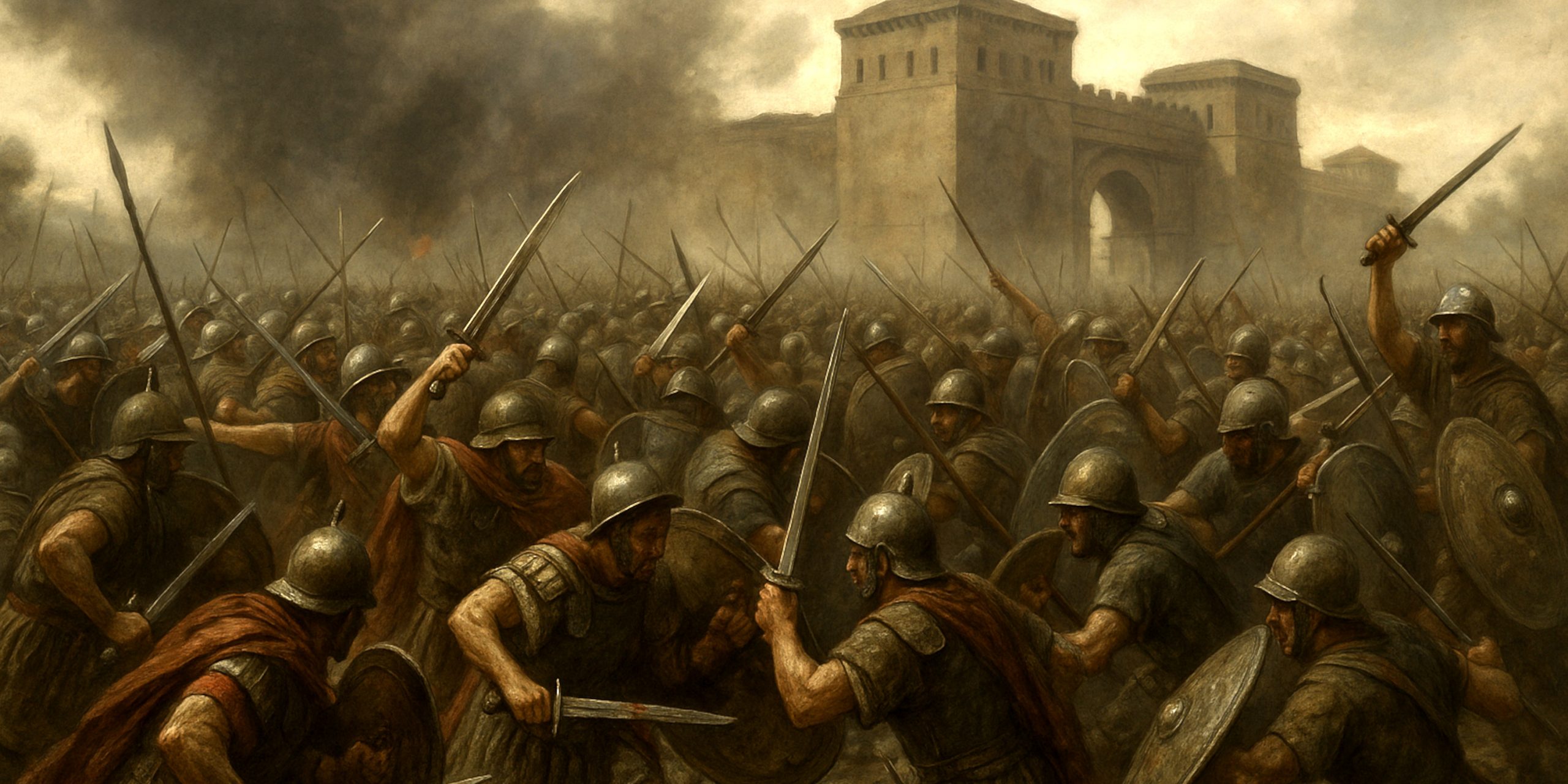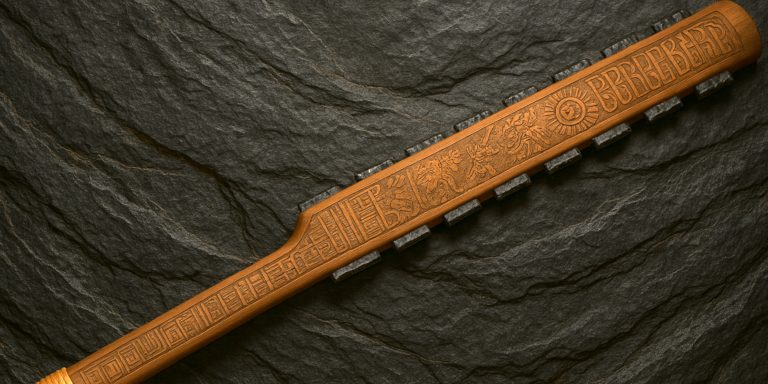
Few battles in Roman history matched the raw brutality of the Battle of the Colline Gate, fought on 1 November 82 BC. This was not a tidy clash of disciplined legions but a desperate street-level brawl that decided the fate of the Republic. At stake was whether Lucius Cornelius Sulla would secure Rome by force or be crushed by the last gasp of the Marian faction. The result was nothing short of a bloodbath outside the northern gate of the city, with Rome once again proving that her greatest enemies often came from within.
Background
Rome in the 80s BC was in the grip of civil war. Sulla had returned from the East after defeating Mithridates, only to find the Marian party in control of Rome. His march south with a battle-hardened army was both a homecoming and a coup. The final stand of the Marian forces came under Gnaeus Papirius Carbo and Gaius Marius the Younger, but at the Colline Gate it was Samnite and Lucanian allies who carried much of the fight.
Their leader, Pontius Telesinus, knew the stakes: if Sulla entered Rome unopposed, the Republican order as his faction saw it would collapse. He therefore gambled everything on one last, spectacular assault.
Forces
| Side | Leaders | Troop Numbers | Composition |
|---|---|---|---|
| Sullan Faction | Lucius Cornelius Sulla, Marcus Licinius Crassus (notably commanding on the right wing) | Approx. 40,000–45,000 | Veteran Roman legions, cavalry contingents, allied auxiliaries |
| Marian-Samnite Alliance | Pontius Telesinus (Samnite), Lamponius (Lucanian), remnants of Carbo’s forces | Approx. 50,000–70,000 | Samnite infantry, Lucanian allies, Marian veterans, cavalry |
The sheer size of the Marian-Samnite host has been debated, but contemporary sources agree it was a serious numerical challenge to Sulla.
Leaders and Troop Composition
- Lucius Cornelius Sulla: Dictator-in-waiting, ruthless, pragmatic, not above butchery.
- Marcus Licinius Crassus: His timely command of the right wing turned the tide.
- Pontius Telesinus: Fierce Samnite commander whose hatred of Rome was legendary.
- Lamponius: Lucanian ally, loyal to the Marian cause.
Sulla’s legions were professional soldiers, many hardened in the East. The Marian side leaned heavily on Samnite infantry, famed for their ferocity but less disciplined in Roman set-piece battle style.
Arms and Armour
Both armies were equipped in the Roman fashion, though with telling differences.
- Sullan forces:
- Gladius Hispaniensis (short stabbing sword)
- Scutum (rectangular shield)
- Chainmail (lorica hamata) and occasional bronze cuirasses
- Standard pilum (javelin) before closing
- Marian-Samnite forces:
- Mix of Roman-style gladii and traditional Italic weaponry
- Round or oval shields, often richly decorated
- Lighter armour among the Samnites, with some preferring mobility to heavy defence
- Spears and javelins, used in fierce opening volleys
It was a battle fought with Rome’s own weapons turned against her.
The Battle Timeline
- Afternoon, 1 November 82 BC:
The Marian-Samnite army descends upon Rome, pressing hard at the Colline Gate. Sulla’s army braces for impact. - Initial clash:
The Samnite left wing drives the Sullan line back. Panic spreads and Sulla himself is nearly routed. - Crassus’ right wing:
On the opposite side, Marcus Crassus rallies his troops and manages to break the Marian flank. His timely push prevents total collapse. - Evening and night:
Fighting continues long into the night. The battle is fought almost on the city walls, with legionaries cut down at torchlight. - Morning, 2 November:
Sulla holds the field. The Marian-Samnite force collapses under pressure. Thousands are slain, including Telesinus, who dies either in the melee or shortly after capture.
Archaeology
The exact site is difficult to pinpoint, hemmed in as it is by centuries of urban sprawl. Excavations around the Porta Collina area have revealed layers of Republican and Imperial material, though no direct mass graves tied to the battle have been identified. Literary evidence, however, speaks of tens of thousands of corpses piled outside the gate, and Sulla’s notorious executions of survivors lend weight to the claim of wholesale slaughter.
Contemporary Quotes
- Appian remarks that the battlefield “was heaped with the bodies of citizens, the very walls of the city reddened with blood.”
- Plutarch, in a rare moment of understatement, described Sulla’s victory as “not won without peril.”
- Cicero, looking back, noted the horror of fellow Romans cut down at their own city gate, calling it “a ruin of the state wrought by its own hands.”
Legacy
The Battle of the Colline Gate marked the end of effective Marian resistance. It cemented Sulla’s rise to dictatorship and ushered in a reign of proscriptions so infamous that his name became a byword for political terror.
It was also a reminder that Rome, for all her foreign conquests, could turn the sword inward with terrifying efficiency. The battle shaped the careers of men like Crassus, who made his name here long before his ill-fated adventure against the Parthians.
Dryly put, if ever there was a recruitment poster for why not to oppose Sulla, the corpse-strewn Colline Gate was it.
The Seven Swords Takeaway
The Colline Gate was not simply a clash of arms but the final convulsion of a Republic tearing itself apart. It left Rome bloodied, traumatised, and firmly in the grip of Sulla’s iron hand. Yet out of that chaos stepped figures who would shape the next generation of civil wars, proving that the Colline Gate was less an ending than an ominous beginning.
Watch the documentary:



